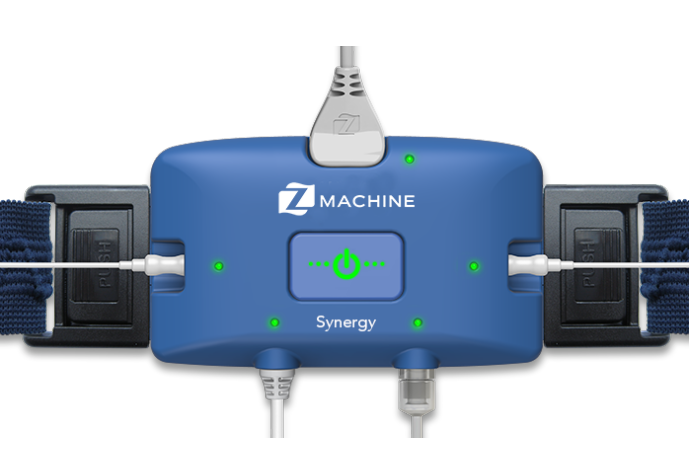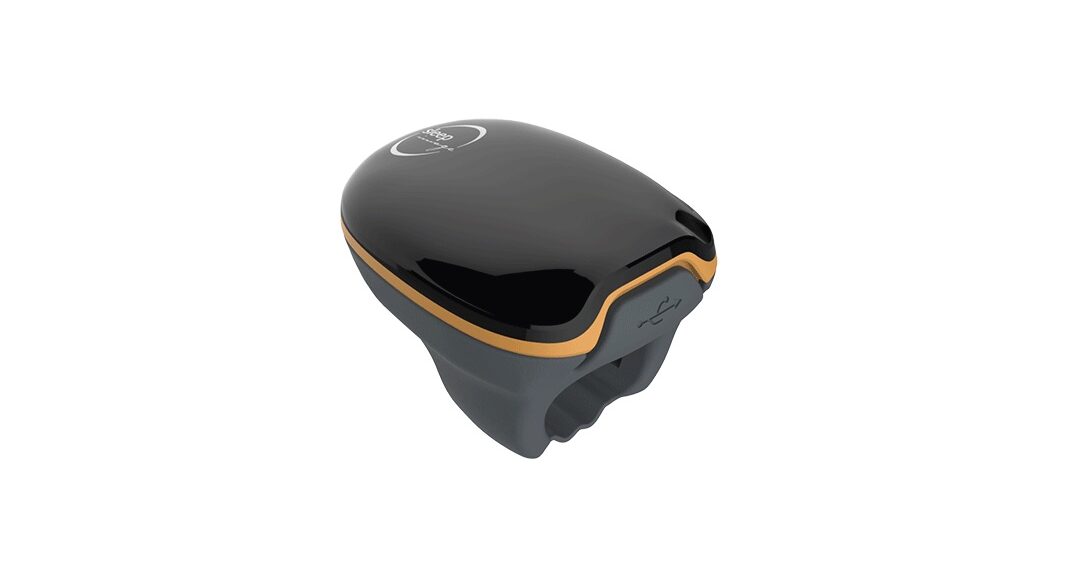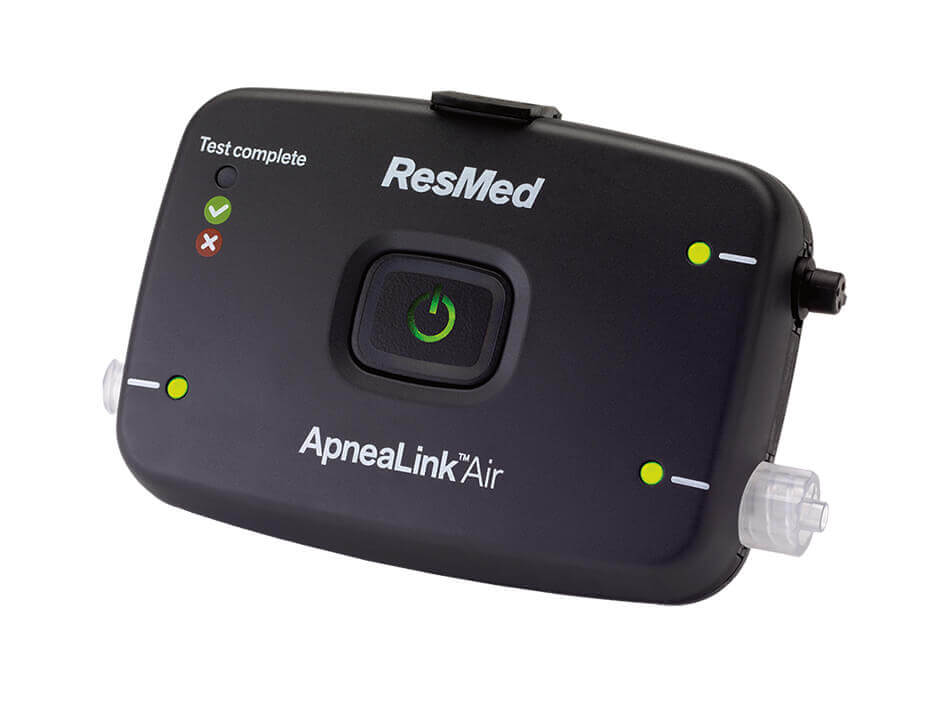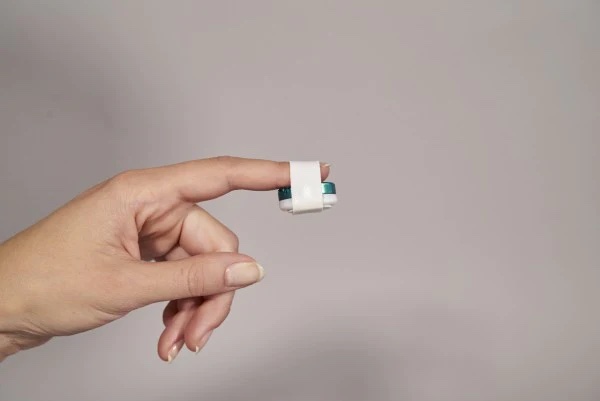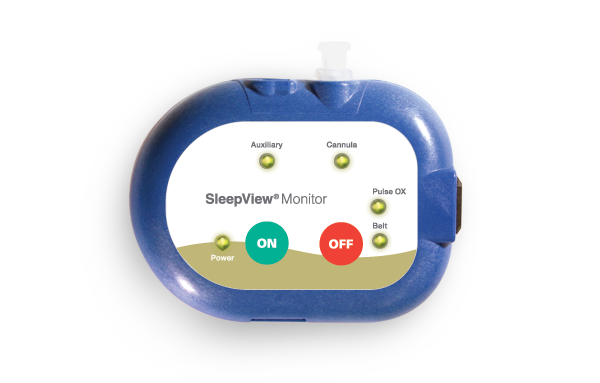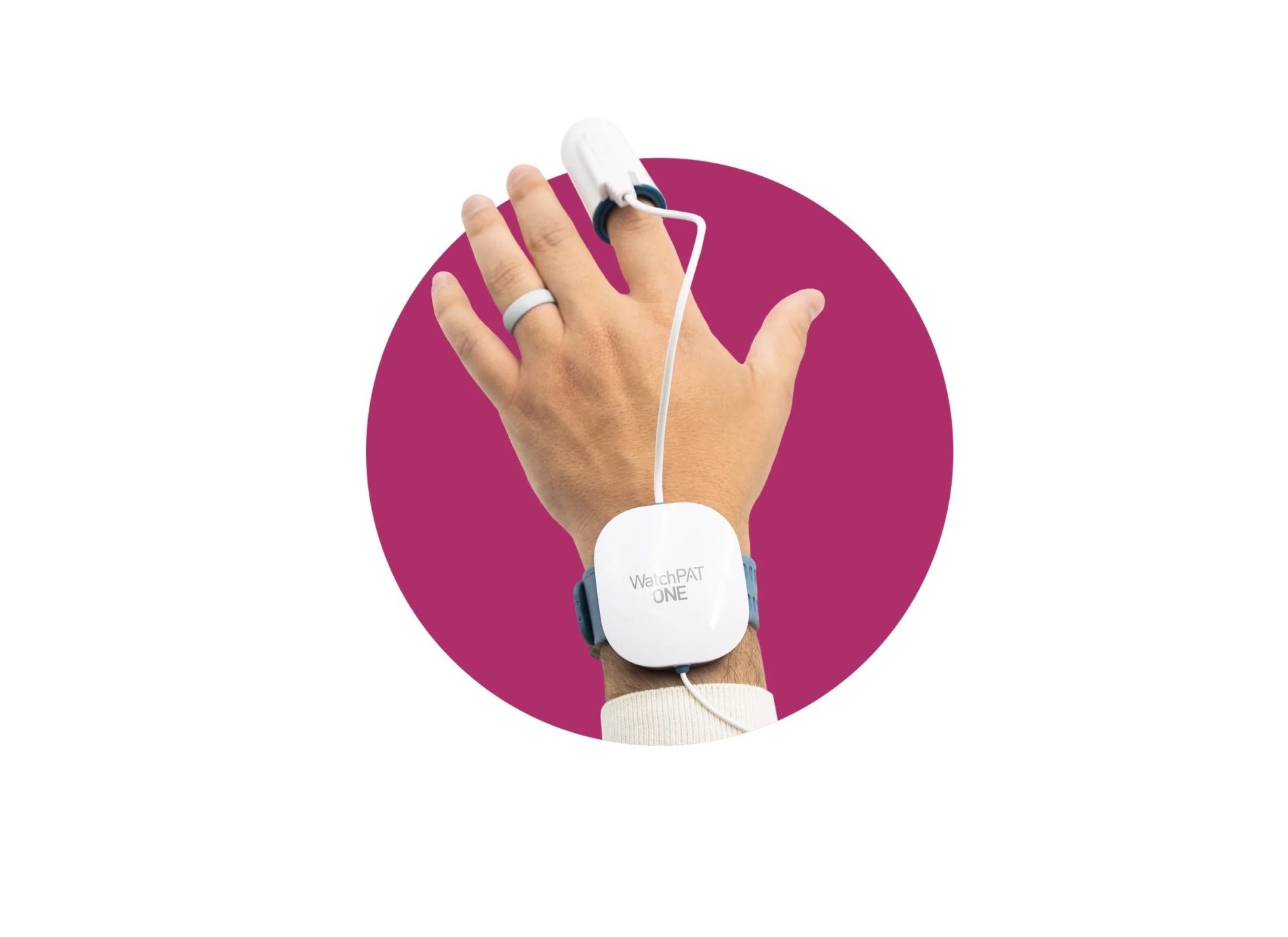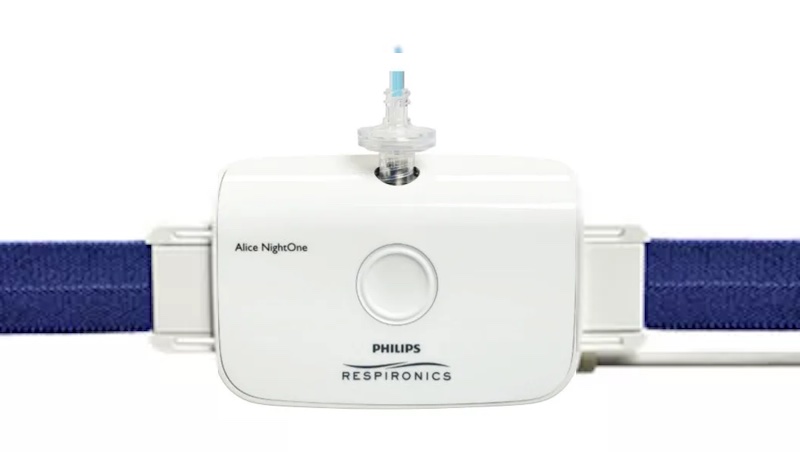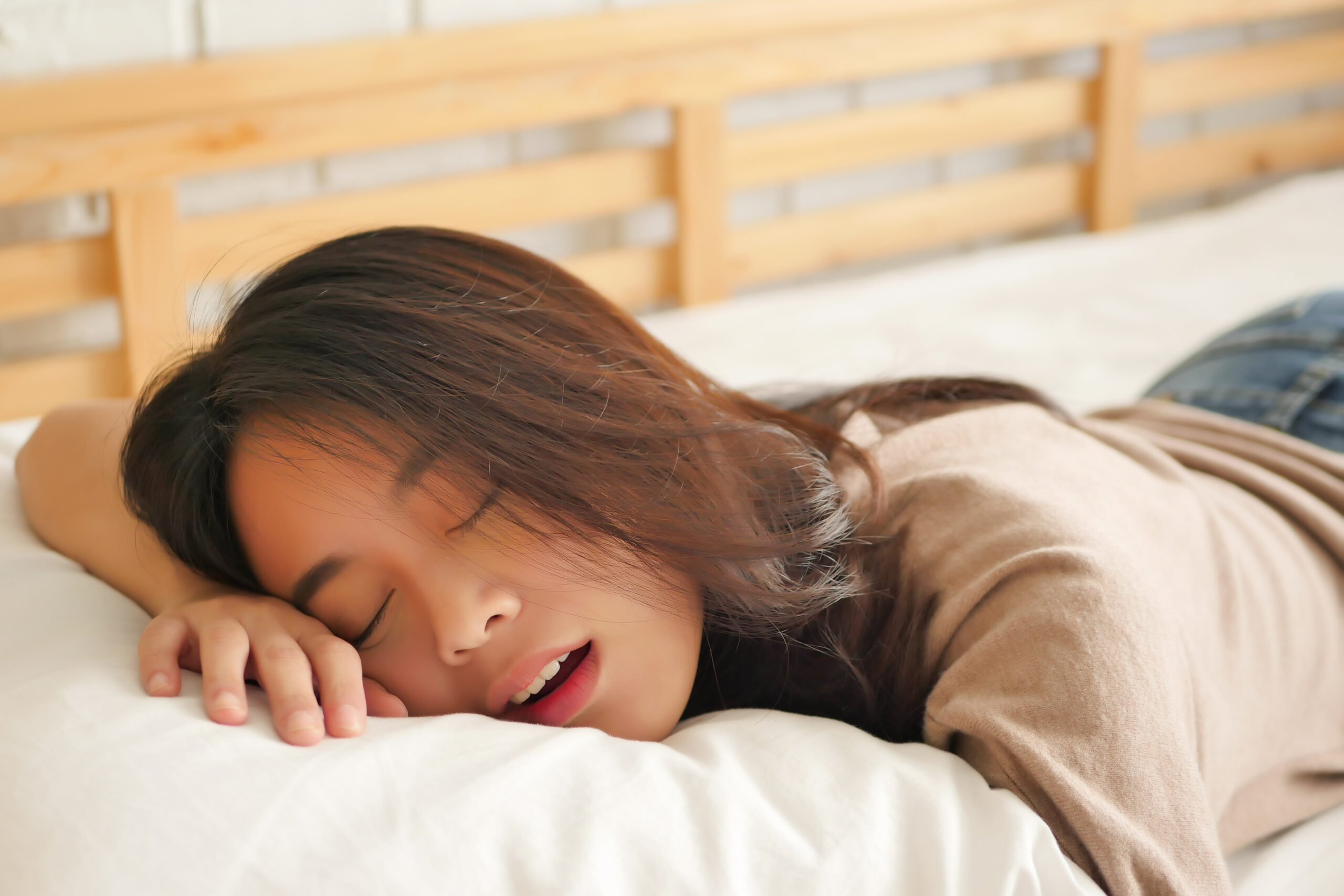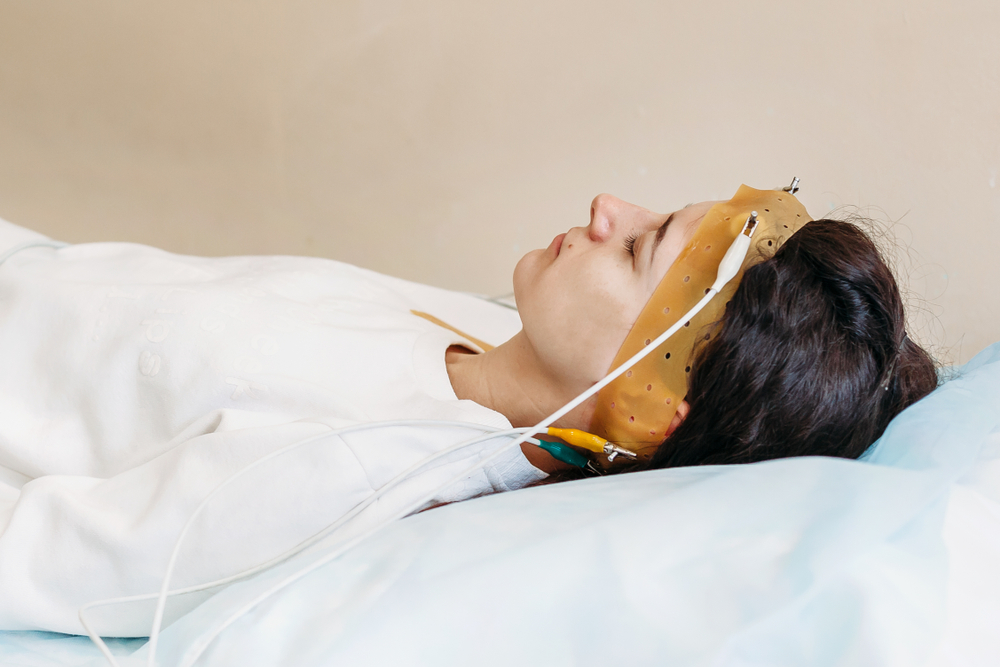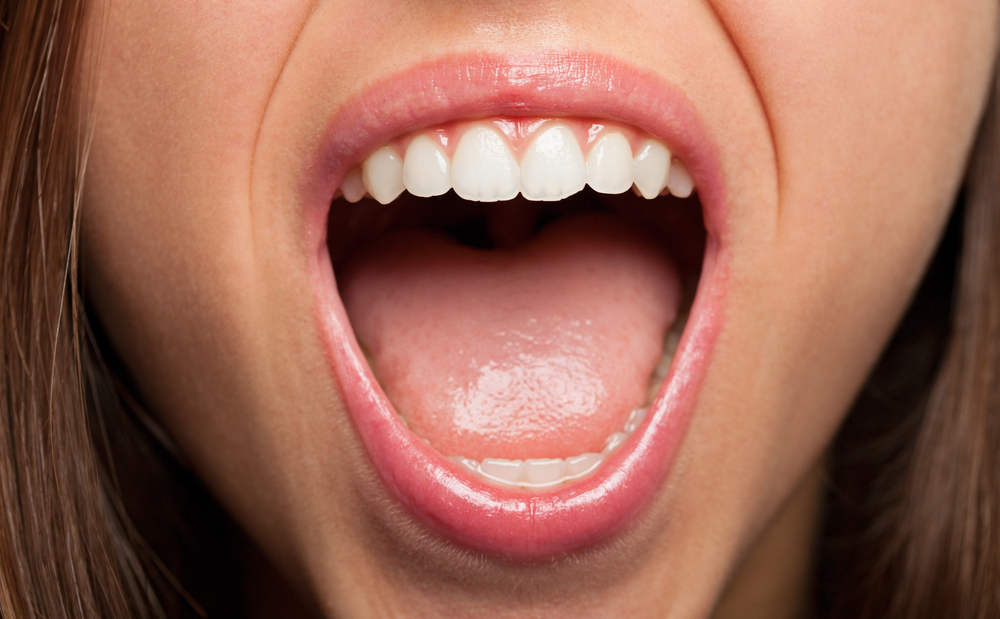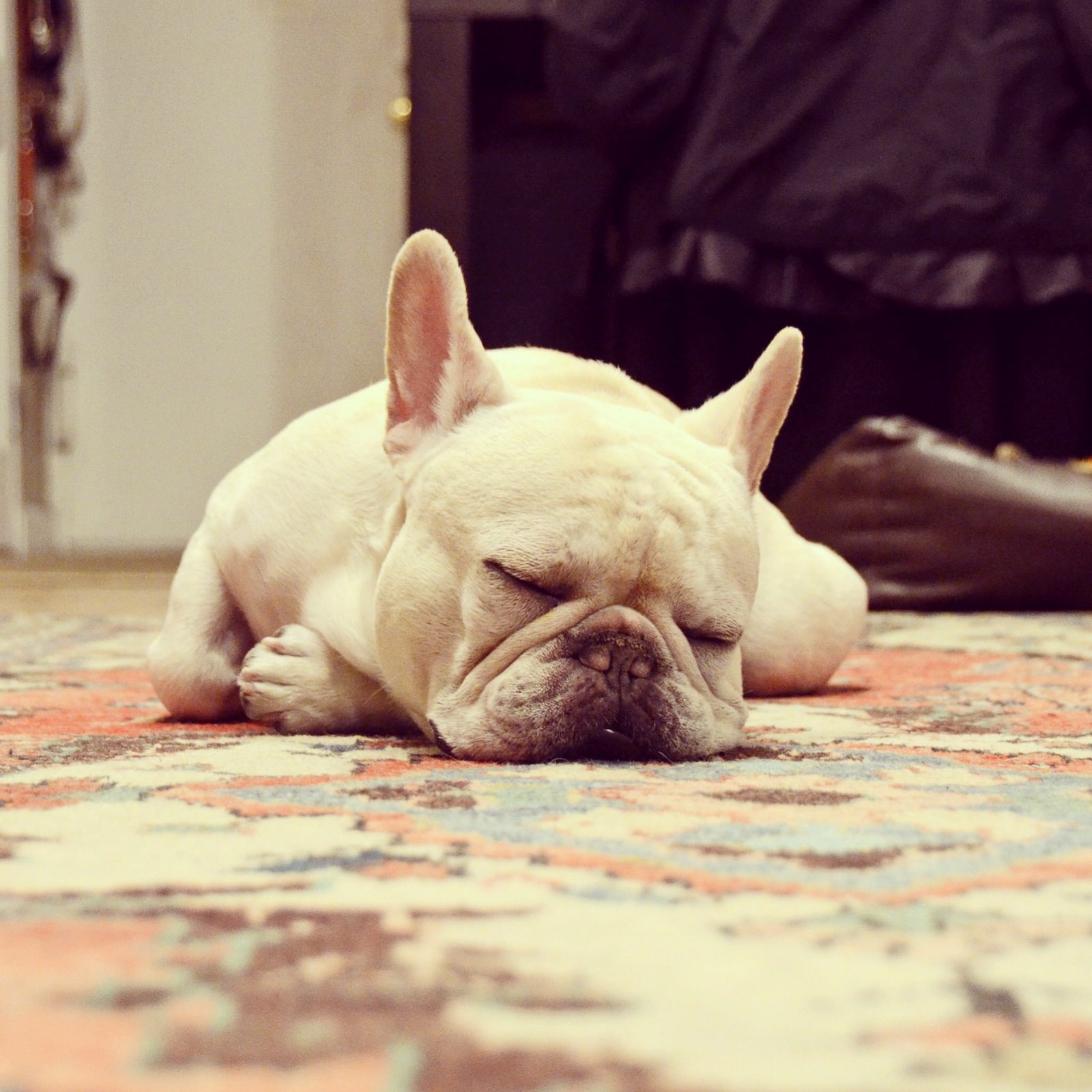Look & Feel
The Zmachine Synergy features electroencephalogram (EEG) sensors, a nasal cannula, and a fingertip probe that connect to a central device on an adjustable chest belt. The range of metrics allows for more in-depth data collection than many other at-home tests.
Ideal For
- Adults with symptoms of obstructive sleep apnea
- People interested in an at-home sleep apnea test with EEG sensors
- Those who live far from a sleep clinic
Who Should Keep Looking
- Sleepers on a budget
- People who might have other sleep disorders
- Anyone interested in a low-profile sleep apnea test with minimal sensors
-
Price
$450
-
Test Location
Neck, chest, nasal, & finger
-
Warranty
2 years
The Zmachine Synergy is an at-home test used to help diagnose obstructive sleep apnea (OSA), a sleep breathing disorder. Most people receive an OSA diagnosis after attending a sleep test at a sleep clinic, but some choose to take an at-home test like the Zmachine Synergy for reasons of cost, convenience, or comfort.
We’ll explain how the Zmachine Synergy works and walk you through how it differs from other at-home sleep apnea tests. We’ll also cover how the test compares to in-person sleep studies, what it includes, and how to use it.
Use this SleepApnea.org link for the most current discount on General Sleep products
Shop NowWhat Is Obstructive Sleep Apnea (OSA)?
OSA is a common sleep breathing disorder that affects up to 15% of women and 30% of men in the U.S. People with OSA experience pauses in breathing, called apneas, while they are asleep. These apneas are caused by a blockage in their airway, usually due to relaxed muscles and tissue.
The sleep disorder is underdiagnosed, and men and older people have a higher risk of developing it. Other common risk factors include smoking, having a high body mass index (BMI), and having enlarged tonsils.
The apnea-hypopnea index (AHI) is a scale used to diagnose OSA and determine its severity. A person’s AHI score is calculated by dividing the number of apnea events they experience by the number of hours they sleep. You must have an AHI of at least 5 to be diagnosed with sleep apnea.
| OSA Severity | Number of Apnea Events Per Hour |
|---|---|
| Mild OSA | 5-14 |
| Moderate OSA | 15-29 |
| Severe OSA | 30+ |
Signs and symptoms of OSA: People with OSA usually experience both nighttime and daytime symptoms. These symptoms can affect sleep quality as well as cognitive functioning and overall health. Common OSA symptoms include:
- Feeling excessively sleepy during the day
- Poor concentration
- Mood changes, including irritability
- Sexual dysfunction
- Headaches and dry mouth in the morning
- Loud snoring with periods of snorting, choking, or gasping
- Frequent awakening
- Increased nighttime urination
How the Zmachine Synergy Detects Symptoms of Obstructive Sleep Apnea
The Zmachine Synergy collects data with three sensors, a cannula, finger probe, and a belted sensor that users wear around the chest. Together, these sensors record nine metrics doctors use to diagnose sleep apnea.
Electroencephalogram (EEG):
The sensors behind the user’s ears and on the back of the neck record the brain's electrical activity during sleep. These readings are an accurate way of determining total time spent asleep and the timing of sleep stages. This metric, which most at-home sleep apnea tests do not feature, allows doctors to see if there is a relationship between a user’s breathing patterns and their sleep stages.
Blood Oxygen Level:
The Zmachine Synergy’s finger probe helps doctors determine how much oxygen is in the user’s blood. During an apnea event, blood oxygen levels dip when the user briefly stops breathing, so this metric is a helpful way for doctors to see how many apnea events the user experiences throughout the night.
Pulse:
The Zmachine Synergy monitor’s the user’s pulse with the finger probe. This can be helpful for determining apnea events or heart rate patterns common with OSA, such as irregular or slow heart rates.
Respiratory Airflow:
The nasal cannula monitors the pressure of each breath and compares it to respiratory effort, allowing the Zmachine Synergy to detect subtle apnea events.
Amount of Snoring:
Health care professionals use the amount of time a person spends snoring to diagnose OSA and determine its severity.
Respiratory Effort (RIP):
The Zmachine Synergy’s belt sensor measures the user’s lung volume as well as how hard the user breathes during apnea events. Health care teams use this metric to determine the quality of your breathing.
Actigraphy (Body Movement):
While the Zmachine Synergy calculates sleep length and sleep stages using EEG, actigraphy gives doctors an idea of a person’s body movement during sleep. This helps determine how frequently a user wakes up throughout the night.
Body Positioning:
Some people only experience apnea events, or experience worse events, when sleeping in specific positions. The Zmachine Synergy tracks your body position to see if there is a relationship between your breathing patterns and sleep position.
CPAP Flow and Pressure:
The at-home test can be used with a CPAP machine. If your doctor requires data on your CPAP flow and pressure, they will provide you with a CPAP interface that replaces the cannula.
Types of Sleep Apnea This Device Detects
The Zmachine Synergy can only detect OSA. Other forms of sleep apnea, such as central sleep apnea (CSA), cause people to stop breathing for brief periods during sleep. However, the underlying cause of CSA differs from that of OSA and requires additional metrics to diagnose.
If your doctor suspects you have symptoms of another sleep disorder, they may suggest another at-home test or that you attend an in-person sleep study.
The Zmachine Synergy’s Accuracy at Detecting OSA Symptoms
While at-home sleep apnea tests are effective at detecting moderate to severe OSA, the Zmachine Synergy’s EEG allows the device to accurately monitor sleep staging, meaning it may be able to detect milder OSA symptoms as well.
User error can affect the test’s accuracy. If your results are inconclusive, your health care team may ask you to test again with the Zmachine Synergy or attend an in-person sleep study.
How This Device Stacks Up Against Traditional Sleep Studies
Most individuals receive an OSA diagnosis by attending an in-lab sleep study, also known as a polysomnography. However, some people may be able to replace this study with an at-home sleep apnea test like the Zmachine Synergy.
There are limitations to at-home sleep apnea testing, but there are also barriers to in-person sleep testing that may make at-home testing the better choice for some people. We’ll examine the pros and cons of each approach to help you determine which type of test better suits your needs.
Zmachine Synergy vs. In-Lab Sleep Studies
The Zmachine Synergy’s use of EEG sensors, a chest belt, and cannula allows it to monitor more metrics than other at-home sleep apnea tests. While in-lab sleep studies are still the gold standard for tests in terms of accuracy and observation, the Zmachine Synergy is a good option for those who are concerned about accuracy but prefer not to do an in-person sleep study.
People who show symptoms of sleep disorders other than sleep apnea or have a history of health conditions that may require additional observation should undergo an in-person sleep study. Individuals who qualify for at-home testing may still choose an in-lab study for a number of reasons.
| Zmachine Synergy | In-Lab Sleep Study |
|---|---|
Benefits:
| Benefits:
|
Limitations:
| Limitations:
|
Does the Zmachine Synergy Replace a CPAP Titration Study?
The Zmachine Synergy can help diagnose sleep apnea but does not replace the need for a continuous positive airway pressure (CPAP) titration study, which is an in-lab sleep study used to determine the pressure an individual needs for effective CPAP therapy.
CPAP therapy is the leading treatment for OSA. CPAP machines use pressurized air at a set level to keep the user’s airways open and prevent apneas during sleep.
Your doctor may also suggest you use an automatic positive airway pressure (APAP) machine, which automatically adjusts air pressure settings throughout the night based on the user’s needs. Titration for an APAP machine may initially be done at home.
What You Need to Know About the Zmachine Synergy
The Zmachine Synergy is an at-home testing device designed to help your doctor determine whether you have sleep apnea.
Six sensors monitor and record nine metrics that provide insight into your sleep health. A CPAP interface can also be used to record data for CPAP flow and pressure. Additionally, the at-home test is approved by the U.S. Food and Drug Administration (FDA).
We’ll take a closer look at how the Zmachine Synergy works, outline its features, and go over how to use the test.
What Comes With It
The central Zmachine Synergy device clips onto an adjustable effort belt that is worn around the chest. Cables and wires connect the device to the other sensors, which include three self-adhesive EEG sensors, a nasal cannula, and a finger probe.
In addition to the sensors and cables, the Zmachine Synergy comes with alcohol swabs to clean the skin before attaching the EEG sensors. The provided medical tape secures the nasal cannula and cables.
Components:
- Zmachine Synergy device
- Effort belt and cables
- EEG sensors and cables
- Nasal cannula
- Finger probe
- Alcohol swabs
- Paper medical tape
- Belt clip
- Instructions
Technical Specifications
While many at-home sleep apnea tests are disposable, users return the Zmachine Synergy to their test supplier after testing. The device is thoroughly cleaned and disinfected between rentals.
The Zmachine Synergy records more metrics than other at-home sleep apnea tests, including EEG sensors that allow your doctor to accurately understand your sleep stages and overall sleep time.
Price: $450
Features:
- Tracks nine metrics
- EEG sensors provide accurate data on sleep stages and records different types of apnea events
- Does not require a smartphone
Customizations:
- A CPAP interface will be provided if your doctor requires data on your CPAP flow and pressure
How to Use This Device
An instructional video on the Zmachine Synergy is available online, and the device itself comes with step-by-step instructions. It is important to follow these directions carefully in order to provide your health care team with the data they need to make the correct diagnosis.
Sleepers should remove any fake nails or nail polish before the test, as they can interfere with the Zmachine Synergy’s readings. Users should note the medical tape can also cause minor skin irritation.
Step 1:
Using the provided alcohol swabs, clean the back of the neck and behind each earlobe. Remove the backing on the adhesive EEG sensors and apply them as directed by the instructions. When applying the sensor, it is important to only press on the outer edge. Allow 20 minutes for the pads to adhere to your skin.
Step 2:
The central Zmachine Synergy device connects to the effort belt, which should be adjusted for a snug but comfortable fit. Users should wear a loose, comfortable shirt beneath the belt. Those with breasts should place the device above them. After the belt is adjusted, insert the belt cables into the device and snap the free ends onto the belt.
Step 3:
Place the square end of the EEG cord into the central device. Connect the black wire to the back of the neck and the white wires to the sensors behind each ear.
Step 4:
Place the prongs of the cannula into the nostrils and drape the tubing behind each ear. Remove any slack with the adjustment tube to help keep the cannula in place. Secure the cannula by placing a small piece of tape over the tubing on each cheekbone. Gently twist the free end of the cannula into the central device.
Step 5:
Clip the finger probe onto the index finger. The wire should be draped across the back of the hand and taped in place before the free end is clipped onto the effort belt.
Once the setup is complete and the tester is ready for bed, the device can be turned on by pressing the central button until it turns green. If a yellow light appears, the corresponding sensor needs to be adjusted. The device’s lights will eventually dim to avoid interfering with the tester’s sleep.
Testers can sleep in any comfortable position. Sleeping on the wires or the device will not damage the device or compromise its readings. In the morning, the tester can turn off the device by pressing the central button for three to four seconds. The device will beep and the lights will glow orange before turning off.
After disconnecting the sensors and attachments, use an alcohol swab to remove any remaining adhesive or gel from the skin. The sensor pads and cannula can be discarded, while the other components should be placed back in the travel case. Return the Zmachine Synergy as instructed by your test supplier.
Sleep Data Results and Diagnosis
The Zmachine Synergy records data on the central device and does not require a smartphone to operate. Because of this, the data can only be interpreted by your health care team.
You can only get the Zmachine Synergy through a medical professional or sleep specialist. Your health care team will advise you on next steps after you conduct your test. If you rent the device from a CPAP specialist, a board-certified sleep specialist will interpret your results and email you a report. Turnaround times for test results vary depending on your provider.
Use this SleepApnea.org link for the most current discount on General Sleep products
Shop NowWhat Do Customers Have to Say About the Zmachine Synergy?
Those who have used the test report that they were pleased by the in-depth data the test provides. However, some users found the setup process confusing even when following the detailed instructions.
Warranty and Shipping Policies
| Availability | The Zmachine Synergy can be rented from a health care professional or a sleep center like Sleep Doctor. |
| Shipping | Shipping for the Zmachine Synergy varies depending on your provider. The test must also be returned, so it’s worthwhile to investigate the return procedure and turnaround time for test results before choosing a specialist. |
| Warranty | General Sleep, the Zmachine Synergy’s manufacturer, offers a two-year warranty against material or workmanship defects for the monitor and a one-year warranty for the effort belt, cables, and finger probe. However, users are unlikely to purchase the Zmachine Synergy outright. |
Still have questions?
Sleep apnea products can be confusing. If you need individualized assistance, send us an email at [email protected] with your questions and we'll help find the best fit for you.


